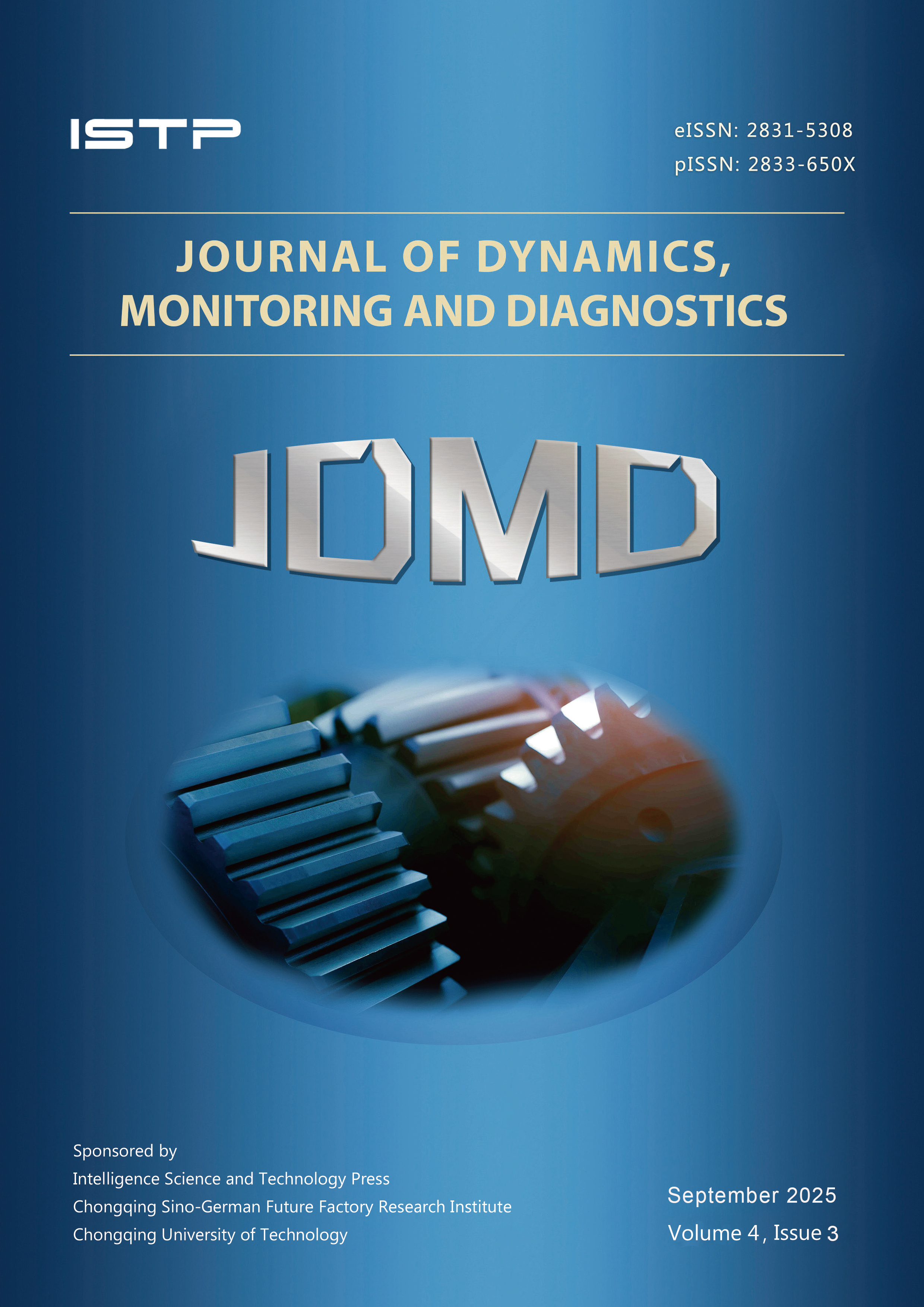An Interpretable Wavelet Kolmogorov–Arnold Convolutional LSTM for Spatial-temporal Feature Extraction and Intelligent Fault Diagnosis
DOI:
https://doi.org/10.37965/jdmd.2025.854Keywords:
Intelligent fault diagnosis, Interpretability, Kolmogorov-Arnold Networks, LSTMAbstract
As industrial systems become increasingly complex, the significant research interest has been devoted to intelligent fault diagnosis approaches leveraging deep learning. However, existing methods still face two critical challenges in practical applications: 1) the extracted features often fail to maintain robustness in nonstationary conditions; 2) deep neural networks generally exhibit a black box nature, offering limited interpretability in their feature extraction process. To solve the above issues, an interpretable wavelet Kolmogorov–Arnold convolutional Long Short-Term Memory (WKAConvLSTM) is proposed, which mainly consists of two key components: 1) a wavelet Kolmogorov–Arnold kernel (WKAK) with learnable scale and translation parameters is designed and then embedded into convolutional layers to enable the extracted spatial features interpretable; 2) a multi-head attention-enhanced Long Short-Term Memory (MHA-LSTM) is proposed to effectively capture crucial temporal dependencies in sequential data. In order to verify its effectiveness, the proposed model is tested on bearing and gearbox datasets under complex conditions, including noise interference, nonstationary operating conditions, and data class imbalance. The experimental results demonstrate that it not only achieves superior diagnostic accuracy compared with advanced baseline models but also enhances the interpretability of the extracted features.
Conflict of Interest Statement
The authors declare no conflicts of interest.









